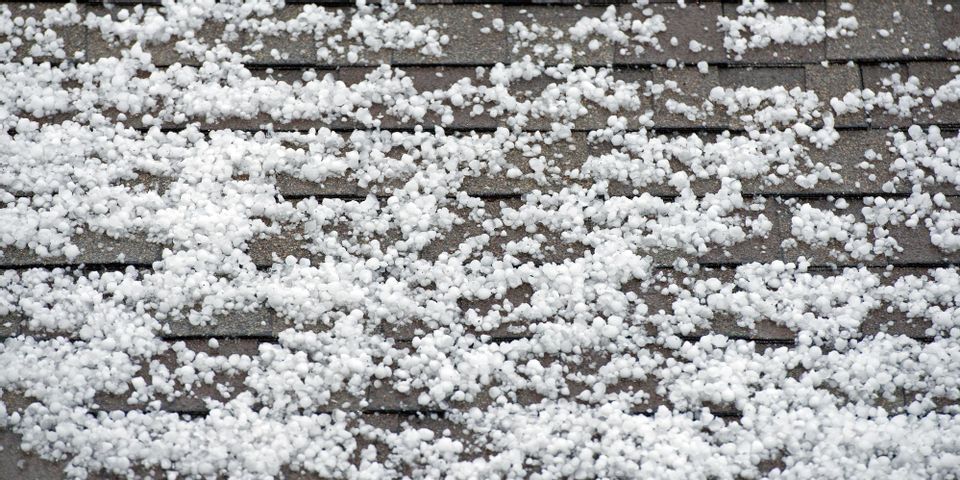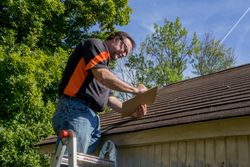
Colorado sees more hail than most places—often appearing without warning. While everything from your car to your siding can be impacted by these ice missiles, your roof is especially prone to hail damage. However, you might not be in a position to notice it right away. The guide below looks at reasons to pay attention to your shingles after a storm.
What to Know about Roof Hail Damage
What Hail Does
When hail hits asphalt shingles, they may dent or experience granule loss at the impact points. The shingles could then crack outward from the point of impact, which is especially common when hail is accompanied by high winds. In that case, the fiberglass mat will become exposed where the shingle breaks away from it, causing it to also be vulnerable to cracks and water damage.
The Consequences
 These weaknesses in the shingles and fiberglass mat may not be obvious at first, but it will cause serious problems with time. When it rains in the future, the water will run over those compaction points, causing the shingle to erode much faster than it usually would. Eventually, it will no longer provide a waterproof barrier and moisture will get inside the home. This can lead to structural sagging or the development of mold and mildew growth. Pests might also explore the hail damage and find a way into your attic. Under these circumstances, even new residential roofing may only last five to ten years more before it needs to be replaced.
These weaknesses in the shingles and fiberglass mat may not be obvious at first, but it will cause serious problems with time. When it rains in the future, the water will run over those compaction points, causing the shingle to erode much faster than it usually would. Eventually, it will no longer provide a waterproof barrier and moisture will get inside the home. This can lead to structural sagging or the development of mold and mildew growth. Pests might also explore the hail damage and find a way into your attic. Under these circumstances, even new residential roofing may only last five to ten years more before it needs to be replaced.
Recently experienced a hail storm? Schedule an inspection with Formula Roofing and Remodeling in Denver, CO, as soon as possible. This roofing contractor will look for the less-obvious signs of hail damage and perform cost-effective repairs. In addition to roofs, they also offer gutter installation and will work directly with your insurance provider to invoice the work. Learn more about these capabilities online. Call (303) 600-8696 to schedule a free estimate.
About the Business
Have a question? Ask the experts!
Send your question

